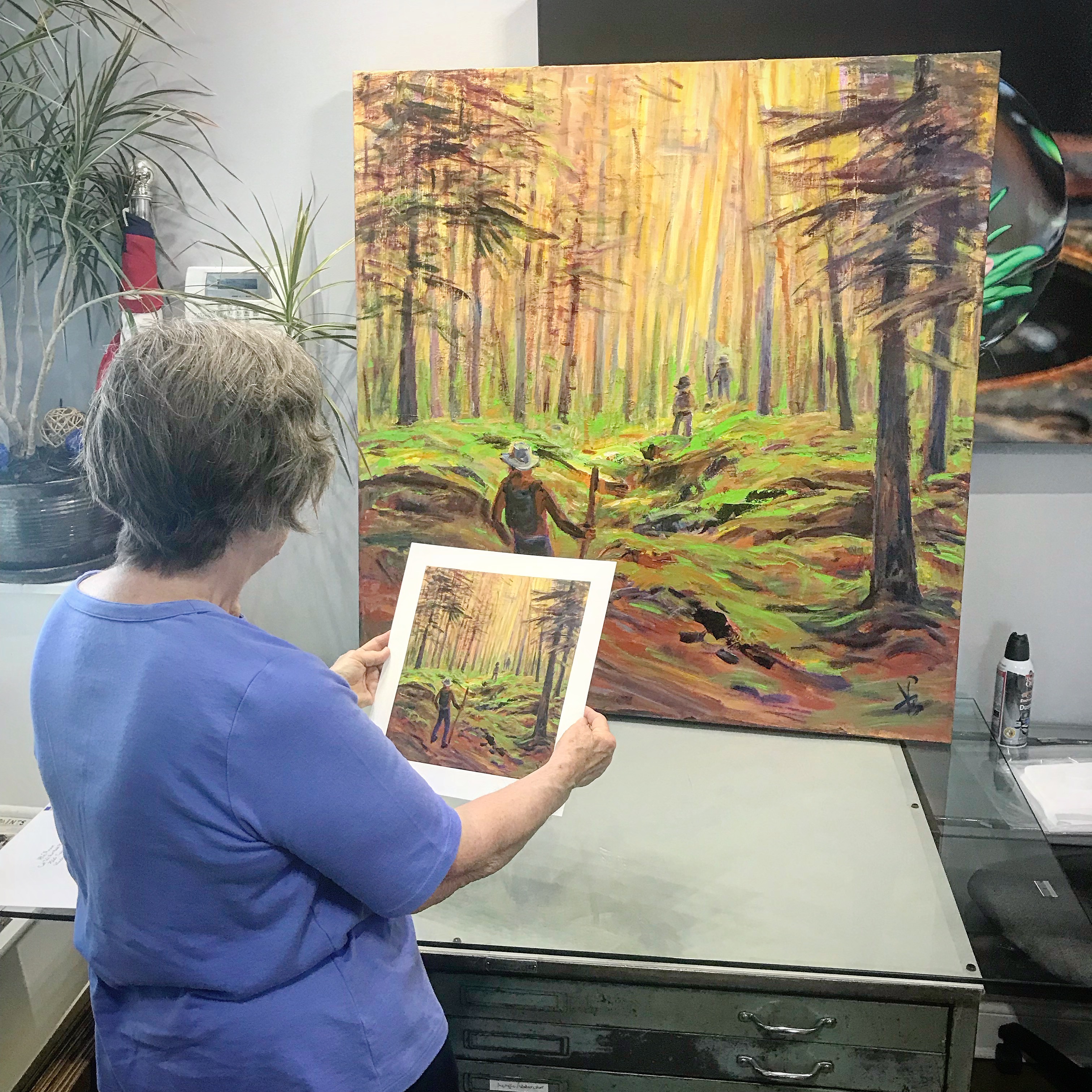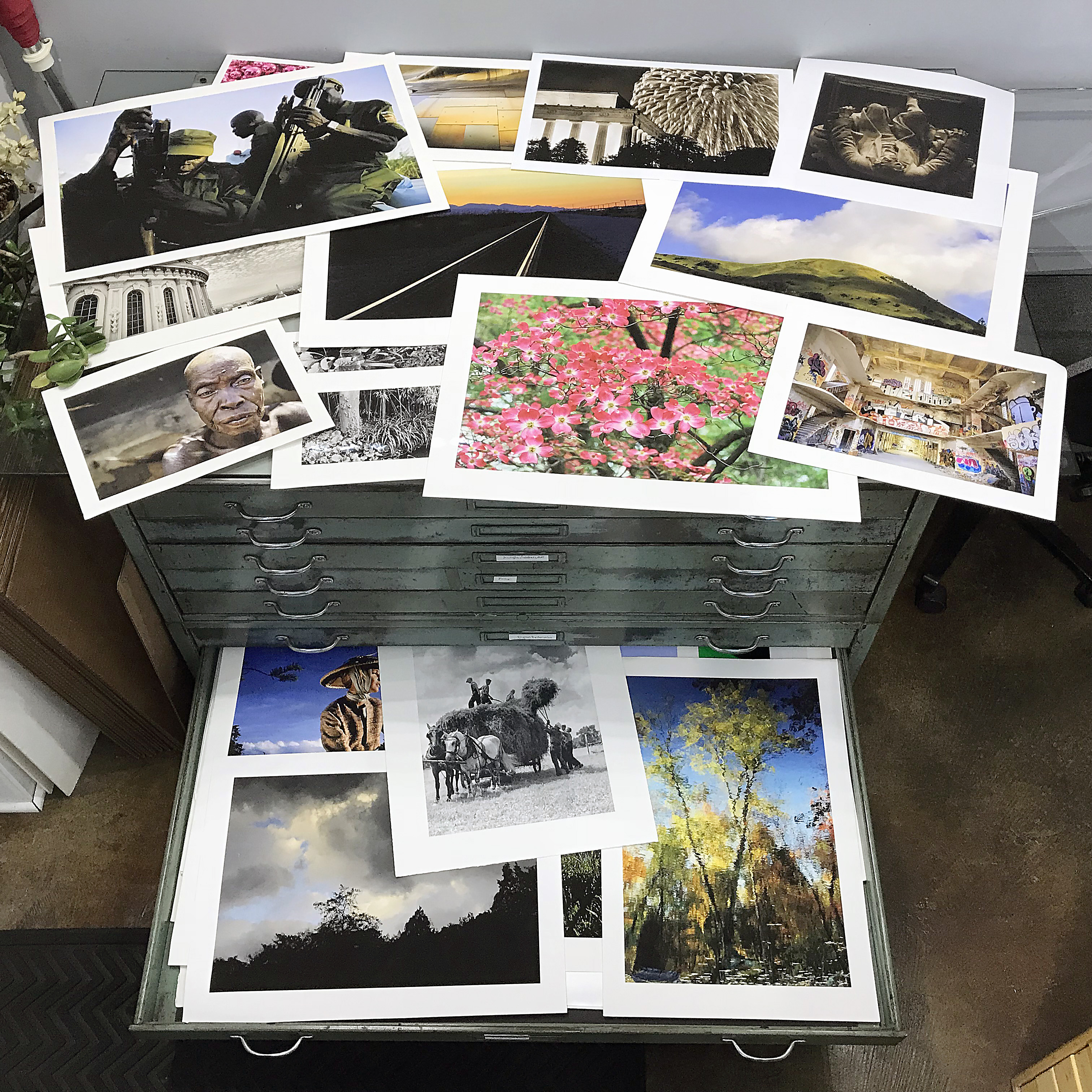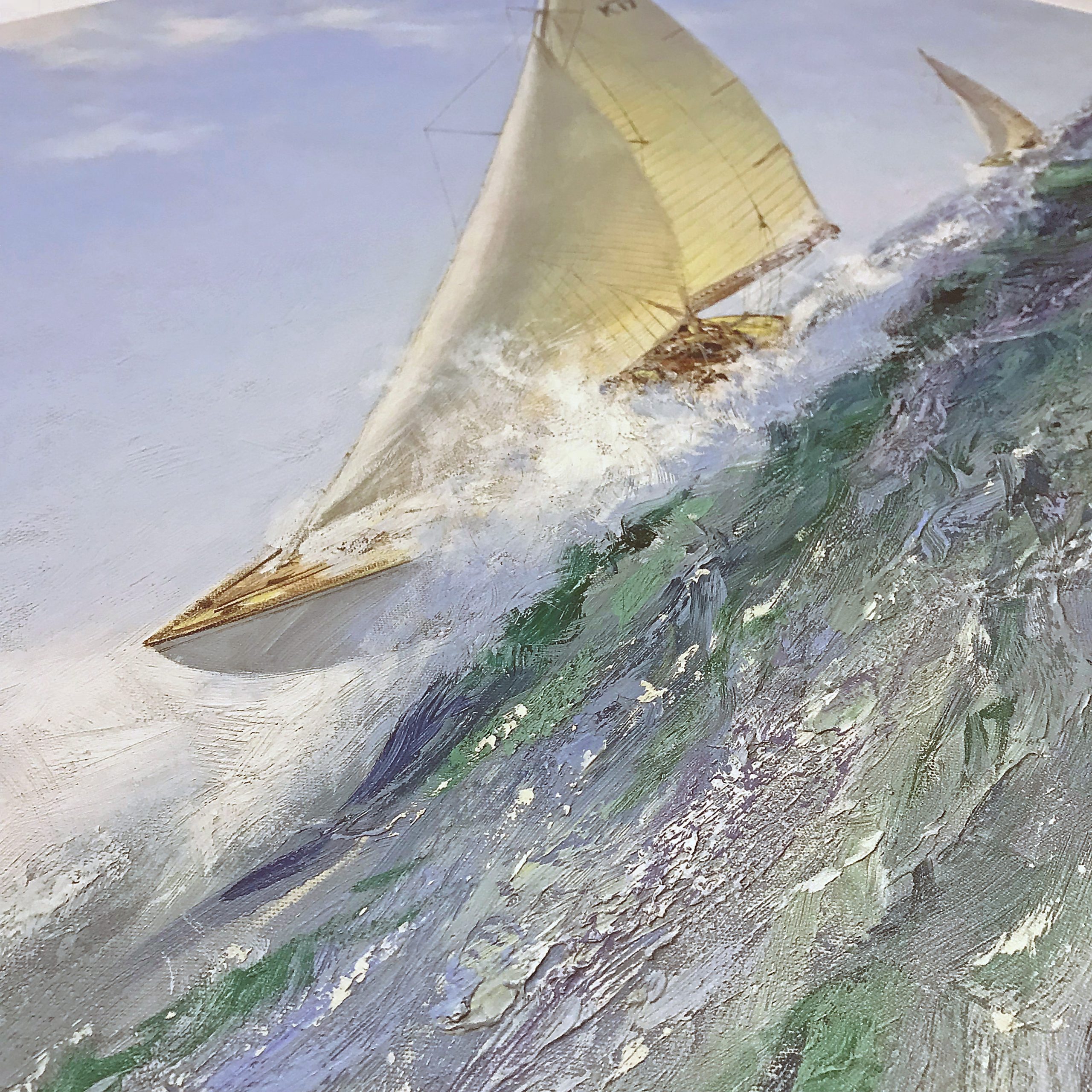Are All Giclees Created Equal?
The simple answer is no. Quality has never been a determining factor in whether prints are considered giclees. In the art market it simply means a print made with inkjet technology. The term giclee has been used to describe prints that widely vary.
I think everyone reading this can see the problem this has created. The word giclee does not indicate any quality or archival standards.
The affordability and ease of use of inkjet printers has made this technology extremely popular. There are a lot of companies that create wildly varying degrees of quality of giclees. Outfits that offer giclees in conjunction with other types of printing can leave artists feeling hopeless and can be a bit frustrated. They commonly have no idea what a good fine art print is or what makes a good giclee.
Consumers are consistently being confused by the overuse of the term. The overabundance of low quality prints being produced by unskilled technicians has caused a flood of subpar giclees to hit the market over the last 10-15 years. It is hard for a buyer to differentiate one giclee from the next in any way other than price. It is important to educate your clients why this widely varying pricing differential exists from one “giclee” to another.
The fact is, all of the prints we are talking about here in this article are giclees. Spend time educating your clients as to what makes your art prints so much more desirable than the masses of giclee prints on the market.
Artist Peg Bruhn reviewing her proof
Come visit our studio and view samples!
Distinguishing yourself from the others shows your prospective buyer that you have a strong understanding of the product you are offering. This usually guides a person looking to invest in art or prints to invest in your work.
If you want to distinguish yourself in your marketing it is best that you completely understand the term giclee and its origin. If you work with Old Town Editions we will teach you how to have an educated discussion about why what you have is more than just a giclee. In our opinion it is best to move on from calling your prints giclees. Keep using the term but educate everyone as to what the term really means or doesn’t mean. Call your prints archival pigment prints, archival inkjet prints, digital fine art inkjet prints, archival digital fine art prints, or just plain pigment prints.
Museum and Gallery Curators prefer you to name your prints with more clear naming like archival pigment print or just plain pigment print, so that there is no misunderstanding what form of print is in front of them.
Why does everyone call inkjet prints giclees? Here is the little known story of the origin of the term giclee, as told by Old Town Editions’s founder Chris Foley:
In the 1990s some printmakers began using a groundbreaking new technique involving pre-press proofing printers called IRIS Printers. These were used to digitally print photographs and reproduce artwork . Chris Foley at Old Town Editions and many others chose to call these prints IRIS prints. There were about 7-10 others using IRIS printers for fine art printing and it was gaining popularity fast. These IRIS printmakers had a meeting to discuss what to call this early version of fine art inkjet printing. Everyone stood up to tell each other what they had been calling their prints to their clients. Chris Foley and several other of the printmakers suggested the prints be called IRIS prints. This name had the advantage of explaining the process and had the pleasant association with the beautiful Iris flower. Jack Duganne stands up and says that he has been calling his prints giclee for a particular art showing at a gallery. At the end of this meeting there was a vote and the new alternate use of the word giclee was coined. From that day the term Giclee has stuck.
Close up of an archival pigment print showing the texture of the original artwork
Ooooooohh Giclee! Sounds Fancy!!
Giclee is a somewhat vulgar French term if used as it is spelled. It means “to spit or to squirt” and in french slang it has been associated with a certain bodily function. It sounds so fancy and exotic to westerners and a bit confusing at first to Europeans. The term has since traveled the world and Europeans have now recognized it as also meaning art print.
This whole article stems from the re-occurrence of the question our clients receive of “why are those giclee prints over there $20 each and yours are more?”. You should be prepared to answer that question. A quick educated answer may just gain you a sale. It is important that printers and artists teach the public to see the differences between a low quality and a high quality print.
We know there are other printmakers just like ourselves out there making gorgeous giclees with archival pigment inks for their clients. At Old Town Editions we strive to offer the highest quality, most consistent color, and top notch customer service in this specialized field. We also want to be an advocate for quality printmaking. We hope this article helps clear up a little confusion about the word giclee and why there is and always will be a huge quality variance within the giclee market.
For further reading, check out our article about giclee print sizes and edition quantities.



